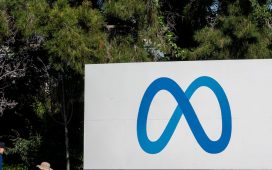
Before joining Formula E, Dabas spent nearly 13 years managing media rights for the International Cricket Council. She noted that the commercialization of cricket in India included creative squeezebacks, replay bugs and other in-game elements because fans would rather tolerate the ads than pay for coverage. Formula E has already researched similar ads, and Dabas said virtual graphics within the race may not be out of the question.
“The fans accepted it, as long as they could watch the sport, the commentary was clear and they didn’t cut to breaks,” Dabas said. “If there is a replay bug or something, it’s in the corner, which is not covering the graphics or the storytelling. I think fans don’t mind.”
The opportunity still available to Formula E, Roku and advertisers during broadcasts is evident trackside at the circuit’s events.
On race day in Portland, the main race finished in less than 40 minutes. Between practice sessions and qualifying rounds, fans ran laps on simulators in a gaming arena, grazed dozens of local food carts, skated with the Rose City Rollers roller derby team, gawked at street performers, skated a half pipe and sat in on a set from pop singer Natalie Jane.

At an “always on” Roku-era Formula E, those are all extensions of the circuit’s story. The connections to cuisine, gaming, entertainment, culture and other sports are at the track, just waiting to be turned into race-day content.
As Eilenberg noted, all of the above are just some of what new generations of fans expect from their interaction with a sport. At the end of Year 1 of their partnership, Roku and Formula E are starting to see a path through the pack to a clearer road ahead.












